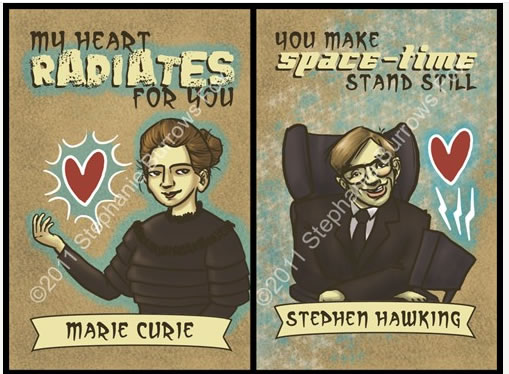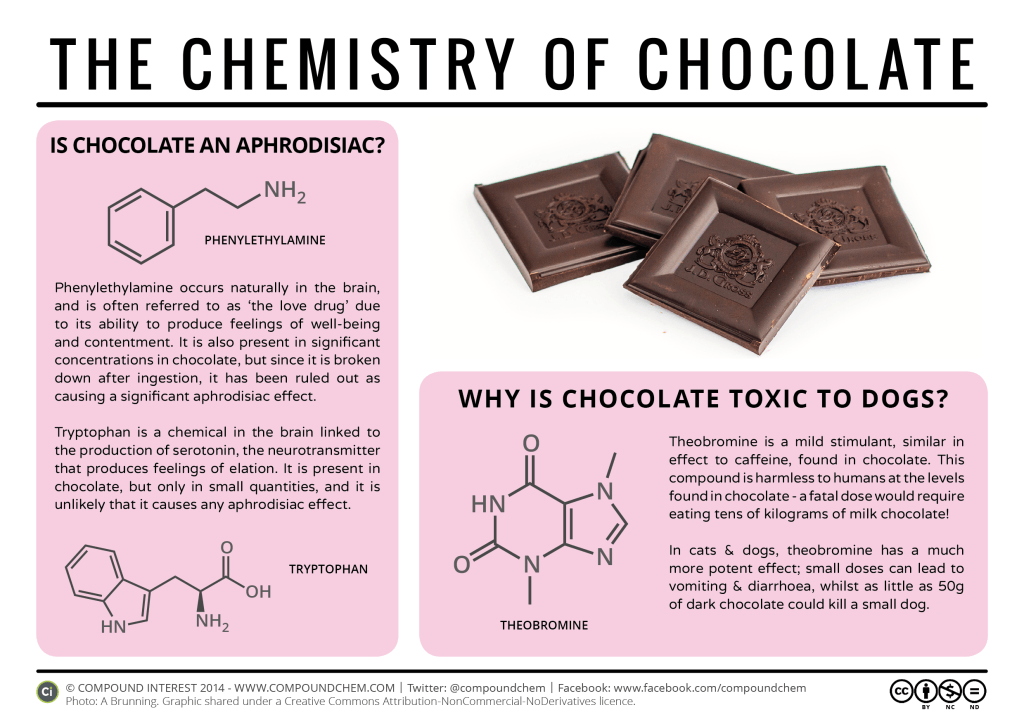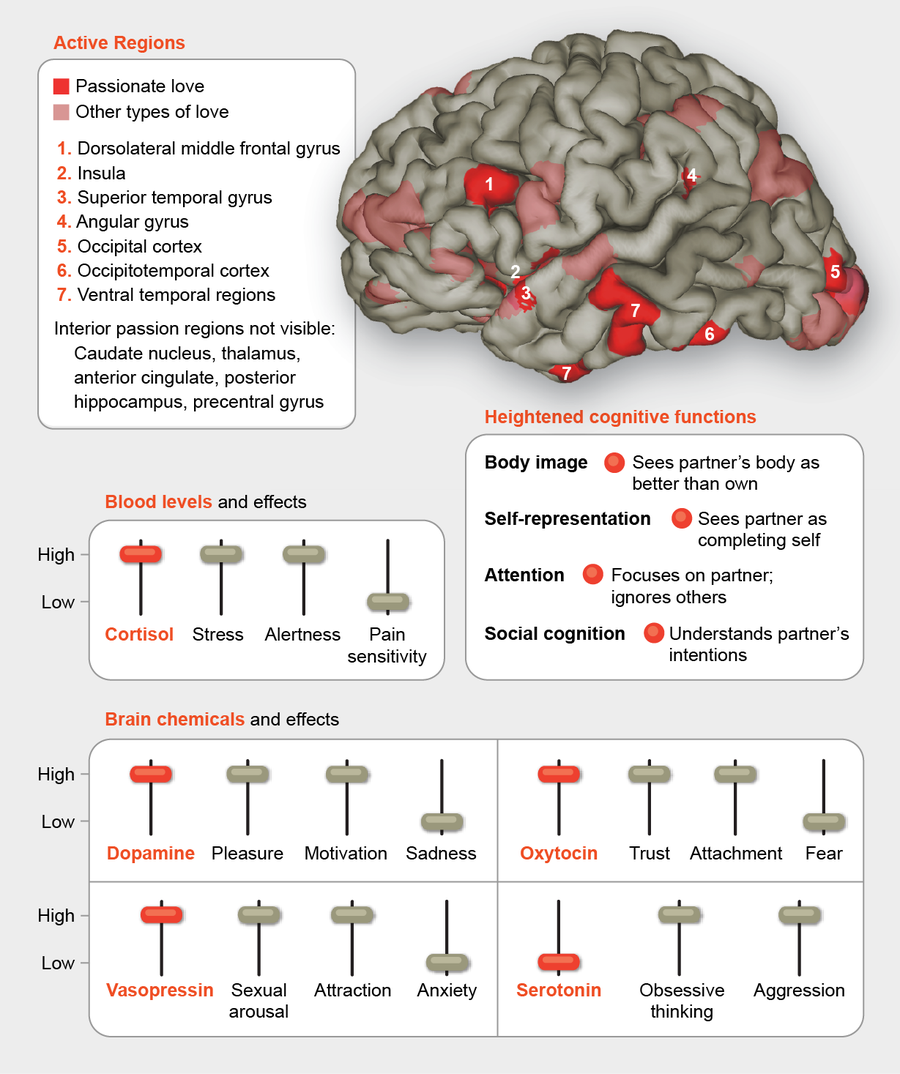Part 1 - History Behind the holiday. Watch the video and answer the questions.
- Why is Valentine's Day so popular?
- What pagan holiday is Valentine's Day taken from?
- Who was St. Valentine and why was he beheaded?

Part 2 - Valantine's Day Chemistry - Refer to the graphic below.
- What elements are found in all of the chemicals in the graphic?
- What are the 4 love chemicals referred to and what do they do?
- Describe how the different chemicals react when someone is in love.
- Make a sketch of oxytocin and describe its importance.
Part 3 - The Chemistry of Chocolate - Use the graphic below to answer the questions
- What is an aphrodisiac?
- Sketch and describe the 2 "love drugs" associated with chocolate.
- Why is chocolate toxic to dogs?

Part 4 - Your Brain in Love - Site where the below graphic came from.
- Sketch the brain and label all the active regions that indicate "romantic love".
- What heightened cognitive functions are indicated by the brain regions affected?
- What are the blood levels of important chemicals and their affects?
- Describe how being in love is similar to being addicted?

Part 5: Pick 3 of the bullet points below to complete.
- These Weird Animal Courtship Displays Are Probably Better Than Your Valentine’s Day Plans - Watch the video below and take notes on the animal behaviors.
- 11 Animals that Mate for Life - List the animals and describe their behaviors.
- Top 10 bizarre mating rituals - List the animals and describe their behaviors.
- The Brain in Love- Video TED - Watch and take notes on comparing to what you have already learned.
- Podcast What is love? - Listen and take notes comparing to what you already learned.
- These Weird Animal Courtship Displays Are Probably Better Than Your Valentine’s Day Plans - Watch the video below and take notes on the animal behaviors.
- Top 10 bizarre mating rituals - List the animals and describe their behaviors.
 s
s